21 Ways to Rekindle Mobile App Engagement in 2023
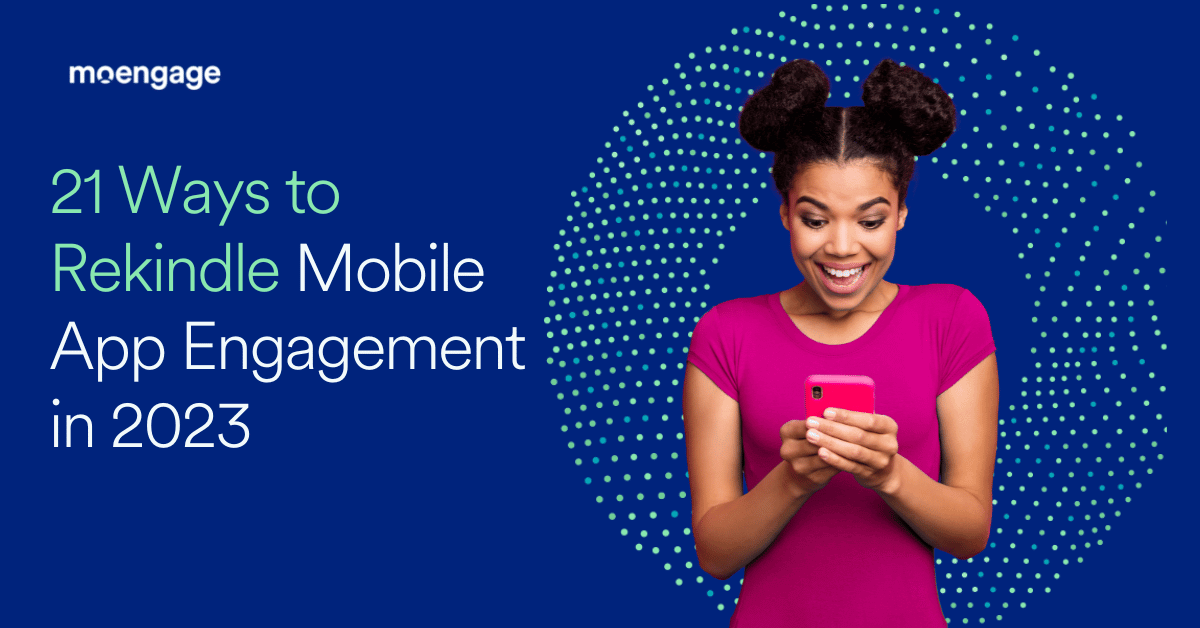
You have done all the heavy lifting until this stage of the mobile app designing, building, and development. So, is the roughest part behind you now? Of course not!
All the time, money, and effort you have put into building this game-changing app will add to nil if you do not find active users and keep them engaged consistently.
The uphill climb begins now with getting approved in the app store, where there are hundreds of others trying as hard as you to get a toe in. Once you cross that barrier, the next step is to let people know you exist. You are not worried about that because you know the prodigies in your mobile app marketing team can do an outstanding job of shouting over others about the USPs of your app.
And now comes the toughest, most challenging part- to ensure that the app download happens in droves and keeps the users engaged. Mobile app engagement is the hardest part of any app’s growth journey.
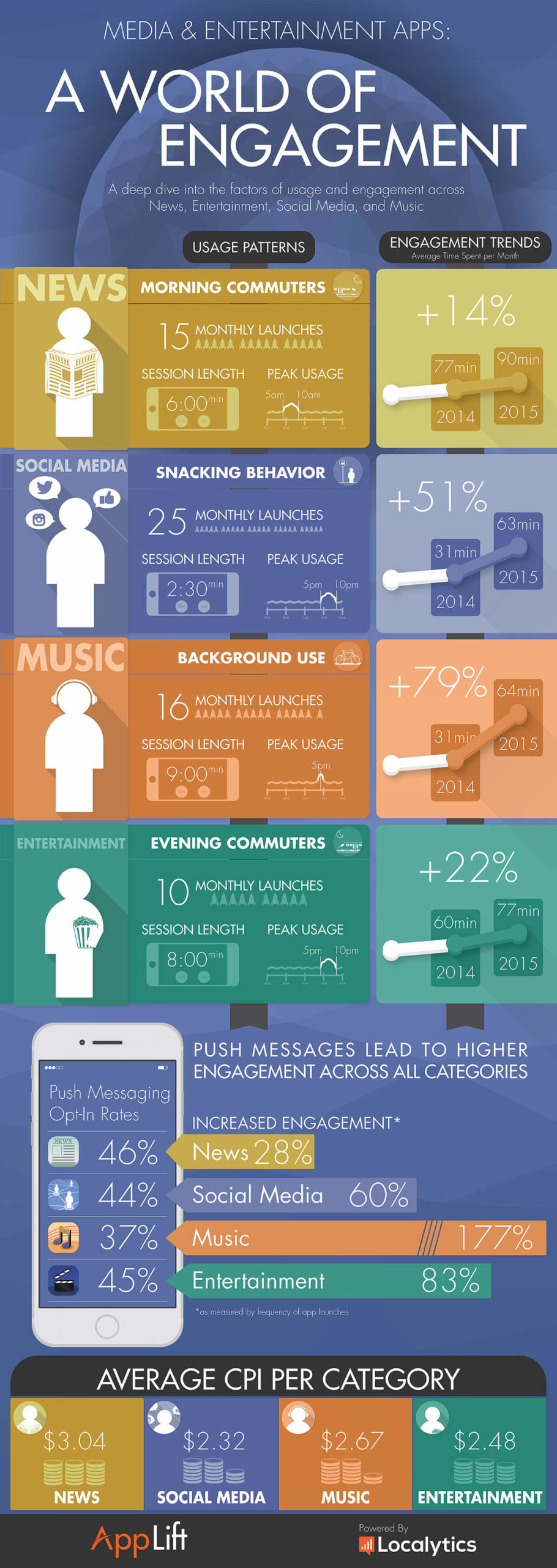 |
What is Mobile App Engagement?
Mobile app engagement is the tact of providing your users with reasons; for repeatedly returning to the app and performing the desired action. For this to happen, you must have a robust mobile engagement strategy.
Why is Mobile App Engagement Important?
Remember, mobile app engagement is all about giving top priority to the needs of the users. There are no shortcuts or quick-fix solutions to this. It involves looking at those vital metrics and understanding their patterns. When you collate all the data, it can help you devise the best mobile app engagement strategy to boost engagement levels significantly.
Recent surveys reveal that the average app loses 77% of its daily users within the first three days after the install. It loses nearly 90 percent of the users within 30 days. This figure climbs up to 95 percent within 90 days of install. It means that an average app loses most of its user base within a few months of launch. And that explains why only a few thousand of the 1.5 million-plus apps survive on popular platforms such as Google Play Store.
Mobile app engagement is a challenging task, but what exactly is the value of an engaged user? Why can mobile marketers not solely focus on acquiring users?
The conventional marketing funnel does not work in the mobile app space. Engagement is not a simple, linear path anymore. In the mobile industry, it has become a dynamic cycle of ongoing interaction with multiple touchpoints. Here is where omnichannel marketing comes into play. It helps reach new customer segments while also improving customer lifetime value.
Measuring User Engagement
Measuring app user engagement is difficult. There is no proven single metric that captures every aspect of user engagement accurately. The metrics mentioned below are guidelines to measure the same:
- Active Users – The percentage of daily users clicking on the app within a specific time
- Interactions – The percentage of users messaged or prompted to perform a definite action and respond to that input
- Lifetime Value – The predicted net profit from the future relationship of the app with a customer
- Number of Sessions – The number of times users clicked and opened the app over a specific time
- Retention Rate – The percentage of users who remain active on the app
- Screenflow – How users navigate through your app
- Session Length – The time for which you use an app
- Session Interval – The frequency of app visits
- Time in App – The time spent within the app
- Opt-Ins and Opt-Outs – The percentage of users that either sign up for or reject alerts or notifications
The top apps, on all major stores, have a significantly higher level of user engagement. These are the ones that have cracked the secret code to win the spirit of users and win back the ones that have gone away. So how do they do it?
1. Focus on User Engagement Early
If you believe your app is so unique that it will pull users in repeatedly and create a magnetic charm on them, you are making the same mistake that most app developers commit. The level of saturation is very high in the mobile app market, with users keeping a close watch on newer apps and ready to ditch old ones quickly. Your mobile engagement strategy must be a proactive one. Evernote does this well. It’s simple call to action button has the user hooked.
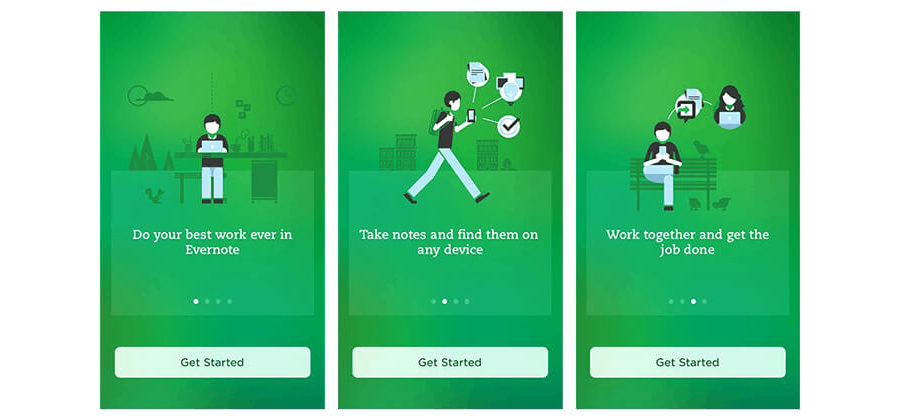 |
2. Make Onboarding Easy
Every mobile app user loves a simple, hassle-free registration or onboarding process. The first impression counts. Asking users to register immediately is not seen as a good app onboarding strategy. If you can optimize your download-to-activation flow, it can give your initial engagement numbers a good fillip. Product features, ease of navigation, and a pleasing interface are all must-haves, but it is more important to make users realize the personal benefits of using your app. It can increase app retention by almost 50%. Amazon and Instagram have a simple onboarding process. On Instagram, you can sign up using either your email address or your Facebook account.
 |
3. Distinguish Between the Mobile App and Web Experience
When using mobile apps, users are impatient. They have high expectations. Offering features that are not available on the web is one way of enticing them. Create a distinct disconnect between the mobile app and web experience by limiting offers, deals, and promotions to mobile-only. You may not see a massive conversion from web users, but their unique in-app experience and advantages will repeatedly make them come back to the mobile app.
4. Use Push Notifications Smartly
Push notifications are one of the most distinguishing features of the mobile app. Many find it a vital source of information. These notifications activate users to open the app more often than those who have not enabled the feature. However, you must be careful not to appear pushy as it may lead to rejection. Impress upon users the value and benefits of notifications and keep the messages relevant. Timing is also of critical importance when you send push notifications – the trick is to send event-based notifications timed practically. Spotify uses user personalization. It increased Spotify’s app engagement by 28%.
5. Keep the Messages Natural and Actionable
The same strategy as push notifications must apply to in-app messages. Relevance and timeliness still apply, but you must see your app messages as providing value to users. You can see the messages as dialogue triggers or convey essential information such as new deals, offers, and rewards. Use CTAs and deep linking to make the messages actionable. Buffer is a good example that uses CTA wisely. As soon as you sign up, it asks you to link all your social media accounts.
 |
6. Communicate and Be Interactive
All apps have one goal – to achieve continual engagement with users. However, this engagement must be two-way to drive brand loyalty. How to do it right? Reviews and ratings can provide valuable user-generated feedback. Third-party feedback is a valuable source, as it tells you the likes and dislikes of users. It is also essential to let users know you hear their voices and value their opinions.
7. Focus on Digital Responsiveness
Digital interactions have become a common socializing resource. If you can ingrain your app into this conversation, you can improve user engagement significantly. After all, we all love doing what others do. App connectivity allows users to interact with the self-generated content of other users and shifts the user-to-app dynamic into a user-to-user dynamic. Amazon’s in-app messaging feature delights customers. It has been shown to increase user retention by 3.5 times.
8. Leverage the Right Channels
You bombard a typical consumer with hundreds of marketing messages daily. With the human attention span limited to a few seconds, you must try something out of the ordinary to grab user attention and keep it. You can do only this if you understand the needs of your users, know their motivational triggers, and create app experiences that fit their behavior. With the field becoming more competitive, it is tough to remain relevant unless you deliver a highly personalized user experience. The other step is to reach out to users effectively by leveraging the right channel mix. Amazon offers classic deals seen below.
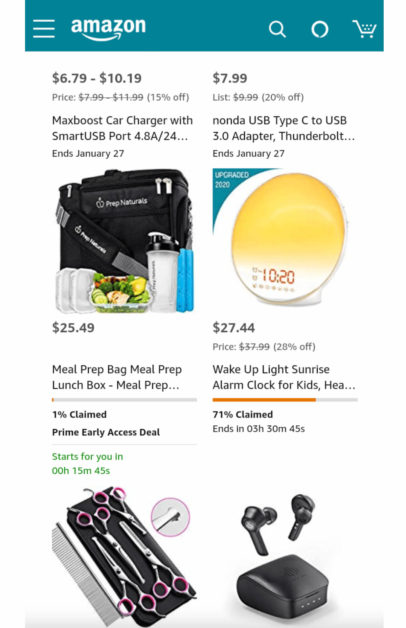 |
9. Implement Widgets
How can you make users know about the events happening today? You can solely use widgets and provide users with the resource to remain current with events. Communicate time-sensitive events and offer using them for a better user experience. Apple does this right. One of their clients, McCormick, could add a Widget to their Flavor Maker iOS software to display fresh recipes on the home screen every day. The user was drawn in by the information, which leads to increased app engagement.
 |
10. Incorporate Chatbots
Users are now comfortable using chatbots to get things done. Integrate your apps with robotic assistants that make life easy and not just for using the apps. Siri Kit’s intentions allow you to integrate Apple’s Siri. Others are likely to follow suit shortly.
11. Provide Location-Based App Ideas
Users love location-based app suggestions that allow them to know about events and venues around their current location. It also based these suggestions on user habits and the present time. Music apps, for instance, provide notifications when users plug in their headphones. A GPS, linked to the user’s vehicle, tracked locations. Social networks can notify events happening within a specific area. Users have the freedom to adjust the notification radius to make them more relevant to their needs.
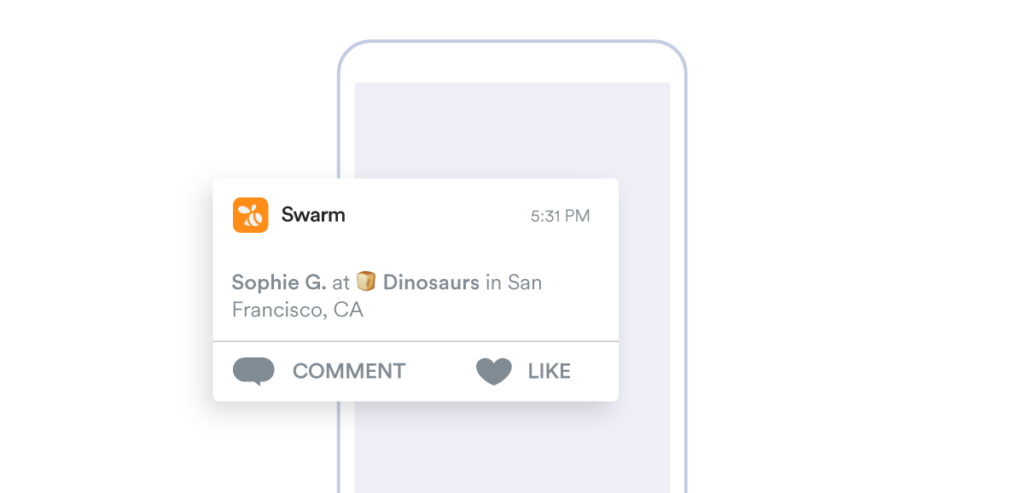 |
12. Add Spotlight Indexing
Spotlight is the mini-Google driving your iOS device. It helps you find any installed app or the one you want to download. Apps with a search function can benefit from Spotlight Indexing. Users can search for the content they are looking for without opening the app. Apple allows spotlight indexing where the SEO and app development teams work together. With this you can search the app without actually opening it.
 |
13. Employ Analytics
The importance of Big Data and in-app analytics is immeasurable. You can predict user behavior and user interest and get valuable insights for engaging them more intensely. For example, Touch heatmaps can help you analyse user preferences and behaviors.
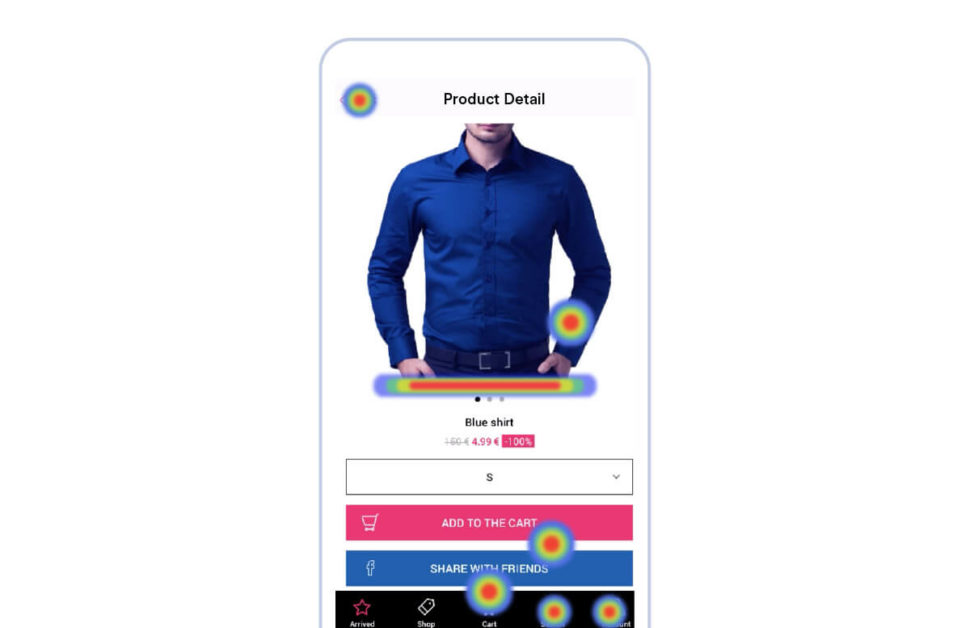 |
14. Re-Engage Your Mobile App Users
Re-engaging mobile app users is an effective way of improving user retention, but it is easier said than done. It is more important to spend your valuable dollars on retention than acquiring new users because of the sensible economics involved. Here is how you can do it right. Keep an eye on your competition to see what they’re offering and then replicate it, or better yet, improve it.
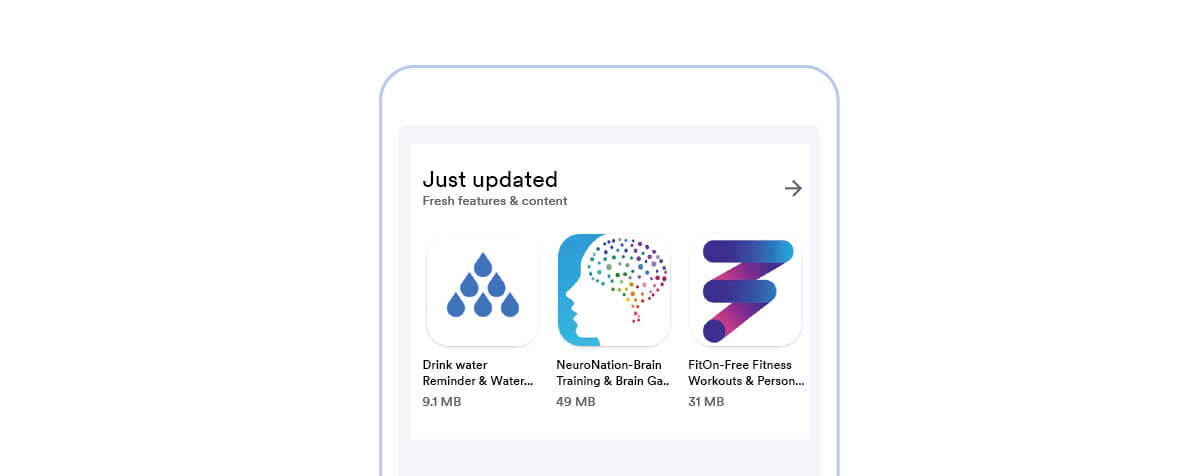 |
15. Re-Look and Fix the Onboarding Process
The onboarding process must be seamless, explain the features, and reflect the value of your app. Create and build a wonderful app user experience by delivering a smooth onboarding experience. Evernote does it the right way. It has progress bars that allow users to see the completion time for the process. Both screens display the same message.
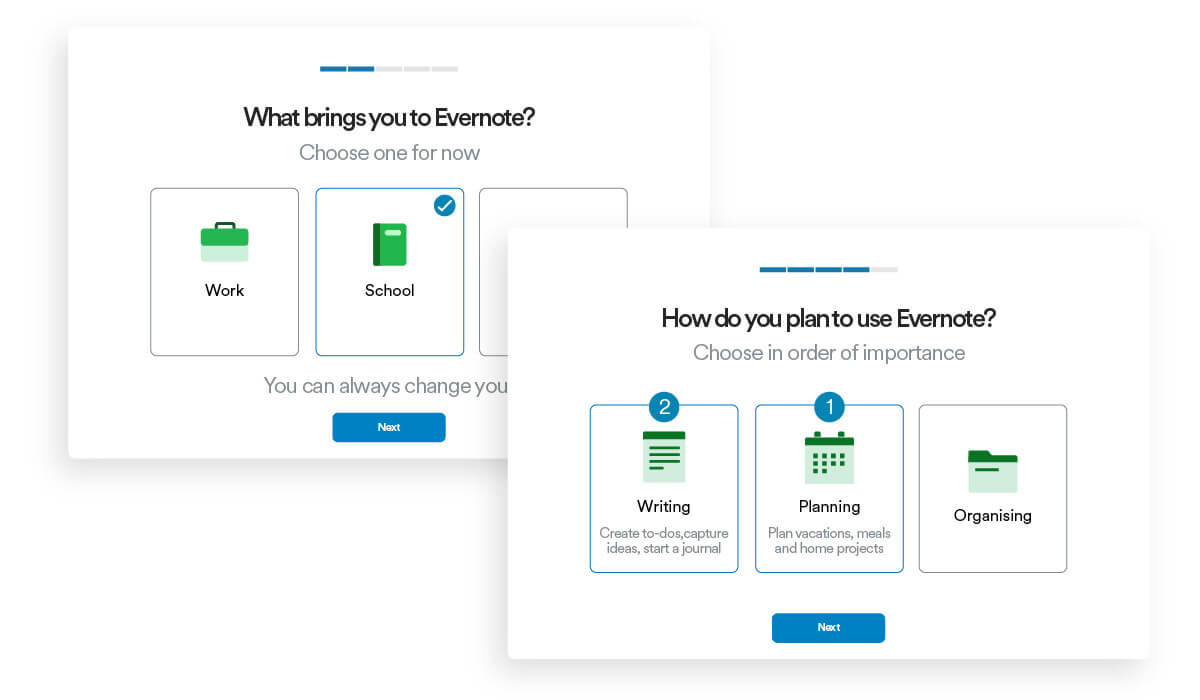 |
16. Deep Link to the Relevant In-App Location
When your users click on notifications and land on the app home page, it is likely to put them off. Choosing a push notification service to link users to highly relevant app experiences is the right way of doing it. You can deep-link to the right content based on the user’s current location using push notification services. It can help deliver a fresh experience to app users and keep them engaged.
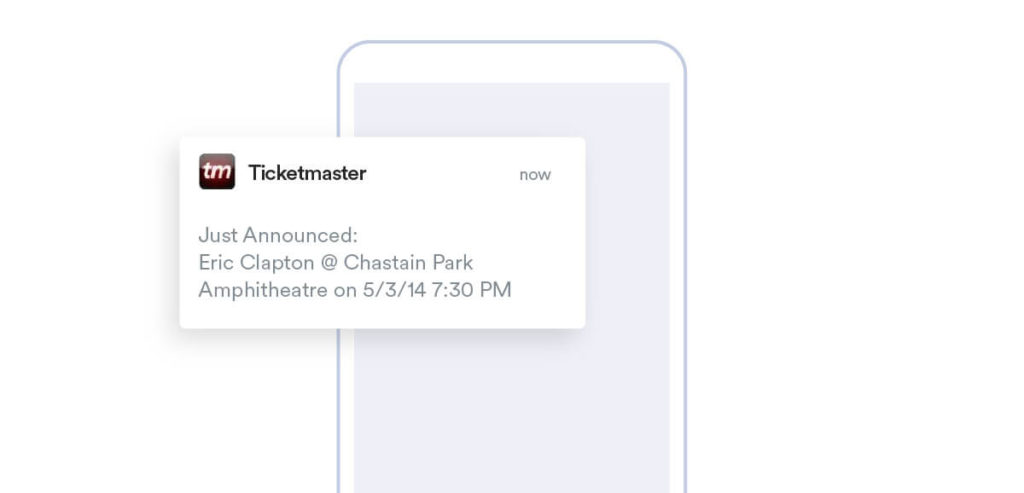 |
17. Employ Smart In-App Analytics and Insights
You must maintain a watch on what works best with your users. Every mobile app is different and has different engagement KPIs. Building an effective engagement strategy involves analyzing your engagement data and understanding your app analytics closely. Make use of tools like Mixpanel, Good Analytics, to gather valuable insights.
18. Offer rewards
Offering mobile-specific prizes is one way for businesses to increase engagement with their mobile app. They might provide exclusive prizes to people who join up for their mobile app. Starbucks offers rewards to people who sign up on their app.
 |
19. Make social sharing easy
Businesses can use their social media presence to boost their app’s visibility. They may achieve this by making it simple to share content on social media using their app.
20. Increase app utility
Simplifying the user’s life is another factor in increasing app engagement. Whether it’s a stress-relieving game or an app that makes depositing checks a snap, there must be a utility aspect to the app for consistent app engagement. For example, Samsung Health App creates a personal workout for people to reach their personal goals, whereas, the App Store suggests mobile apps based on previous downloads.
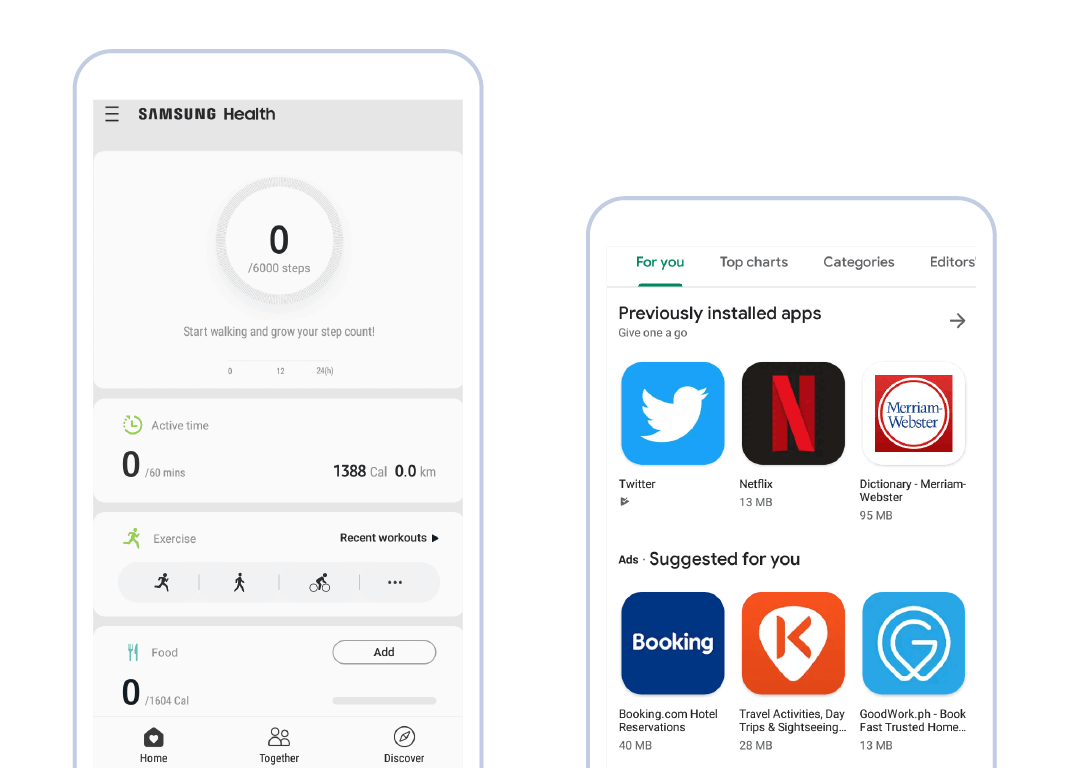 |
21. Develop a seamless cross-channel experience
Creating a seamless experience for the user will enhance app engagement. The customer can go back and forth between physical locations, PC, and your app, giving the impression that it’s all part of one seamless, personalised experience. Postmates excels at this; in the example below, a user who clicked on an email campaign is directed to the same promotion within the app. You can effortlessly create email campaigns that work anywhere using Branch’s Universal Email.
 |
Conclusion
This guide to improving mobile app user engagement can help you devise a vigorous mobile engagement and re-engagement strategy. By applying the techniques shared above, you can keep users long after the app purchase and familiarise them with the features and benefits.
It is important to remember that effective engagement is at the core of the long-term success of your app. You must consider a proactive approach to ensure that your app users are consistent and remain loyal for long. Apply these strategies to give your app the best chance to continue on the handsets of loyal users.
Here’s What You Can Read Next |












